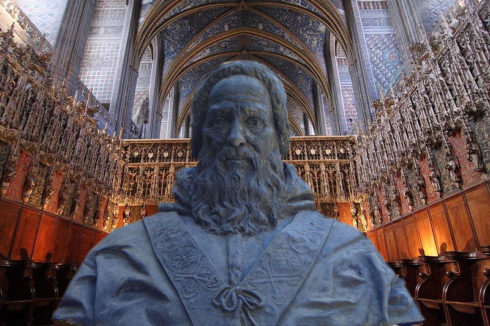The Holy League agreement announced on 25 May had been solemnized five days earlier in the presence of [Saint] Pius V in his capacity as Pope, and signed by representatives of himself as ruler of the Papal State, King Philip of Spain, the republics of Venice and Genoa, Grand Duke Cosimo of Tuscany, Duke Emanuele Filiberto of Savoy, Duke Francesco Maria (Della Roverre) of Urbino, Duke Ottavio (Farnese) of Parma, and the Knights of Malta. Its stated purposes was to wage war in perpetuity against the Ottomans and Muslims of Africa and the Middle East, it primary objective to recover Cyprus and the Holy Land, and to this end the parties would provide 200 galleys, 100 ships, 50,000 Italian, German and Spanish infantry, 4,500 light horse and an ‘adequate’ number of guns, ammunition and other necessities….
Place was reserved in the League for the [Holy Roman] Empire, France and Portugal, and the Pope undertook to continue his efforts to persuade the Empire to break its truce, and France its alliance, with the Ottomans. King Sebastian of Portugal, whose own Moroccan Crusade was to lead to the extinction of his line at Alcázarquivir in 1578, at this time was constrained by commitments in the Indian Ocean and the Red Sea, where his captains and the rebellions they encouraged were tying down sizeable Ottoman forces.
Hugh Bicheno, Crescent and Cross: The Battle of Lepanto 1571 (London, Cassell, 2003), 210-11.
Short Stories on Honor, Chivalry, and the World of Nobility—no. 311
______________________________
Also of interest:










